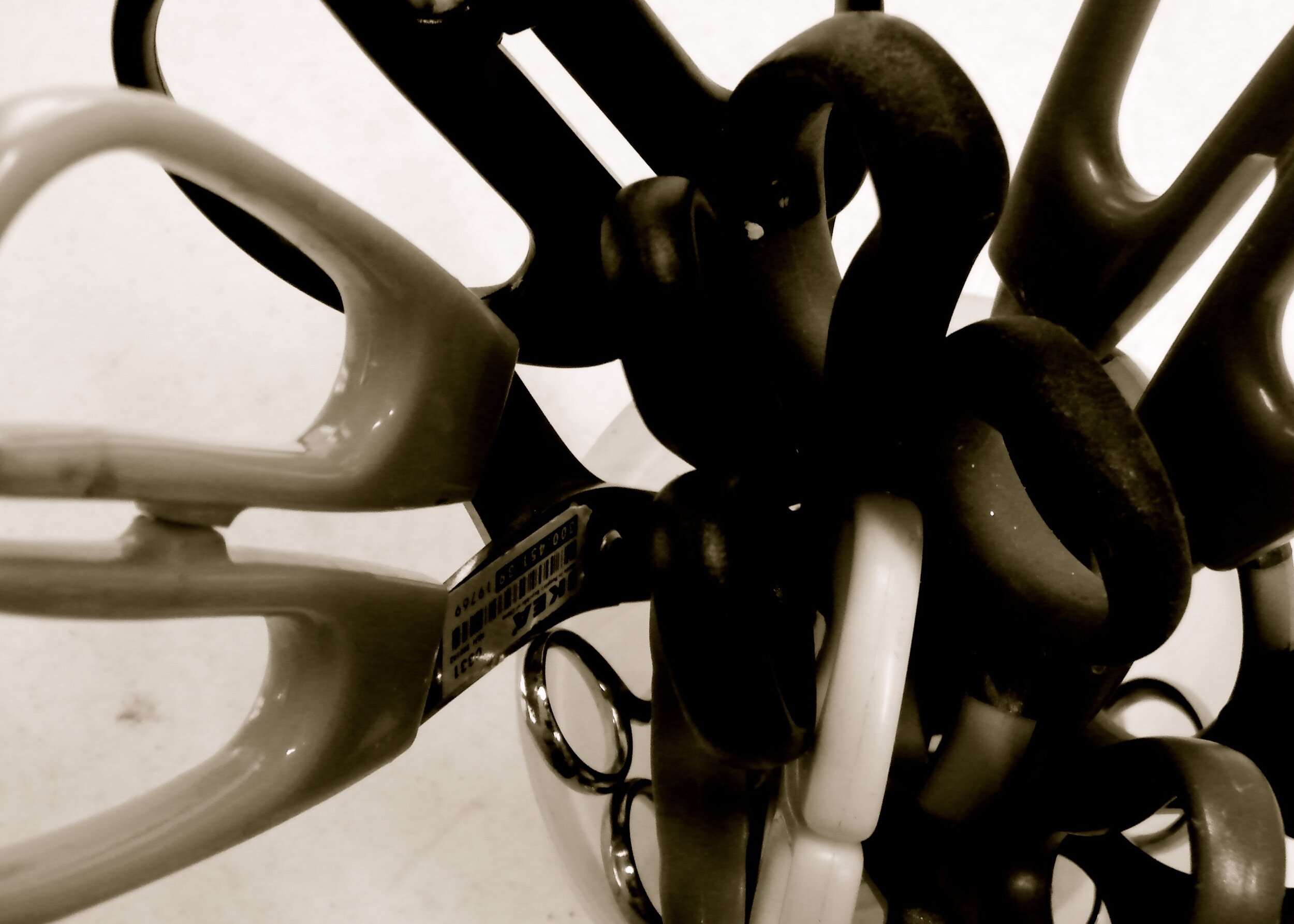killing monsters
“Oh, it needed to die” I said, stating the obvious.
My client looked at their finger, at the remnants of an insect now black jam on the tip, a few legs sticking out.
“Yes, it died”
They looked away from me down at the ground on which we sat. They were a child, but fast growing up. They wiped their finger on the dirt, then pushed it in, burying it briefly between shards of broken pavement. Their support staff stood a little distance away, like prison officers, themselves awkward and seemingly unsure. My client said a definitive goodbye, session over for this week. In just a few moments my client had made a killing.
As a child I had a toy rifle, you could cock it like a real rifle, and when you pulled the trigger it let out a bang and a whiff of oily smoke for authenticity. I also had a wooden crossbow that I managed to smuggle in my hand-luggage from Italy, age 12. My father was fascinated with the wild-west; books, films, ‘spaghetti westerns’; Clint Eastwood was his hero. Weaponry was part of my life, spud guns, pistols, darts and even a bout of archery. Where other kids played football and pool, I stood alone and shot at targets.
Killing monsters is powerful stuff. Swords, guns, light sabres, death pits, and magic rings have all found their way into my Art Therapy sessions. I have written before about finding an image of myself being pushed down into a bucket of water, at my clients insistence that I needed to die. Some of my clients will have experienced horrors at the hands of powerful people, remnants of abuse that may remain as real and resonant in adulthood. For some there is an important level of control in making non-verbal statements, refusing to leave their bed, or stomping about, but killing does something else. Here the art-making swallows the death, it makes it safe, it turns it to concrete and allows it to be witnessed.
It’s not only taking control that seems to be important here. The acting out of violence in play seems to form a rite of passage, like ‘make-believe violence’ in comic books, where my clients appeared to use weapons and create all-powerful monsters, and insert themselves in stories of super-heroes in which they discover feeling ‘big and strong’. The American comic book writer Gerard Jones talks about the ubiquity of play-violence in his book “Killing Monsters”;
“In every culture, children always develop some fantasy of projecting destructive power across space … in societies where guns aren’t part of the local symbology, kids play similar games with bows and arrows or spears.”
Boys in particular but not exclusively can create and identify with superheroes, who overcome adversity despite being ‘freaks’ on the periphery of society, enabling for the child a belief in personal invulnerability, a perception of the world as meaningful. This hero-play reduces the ambiguity of every-day life into a contained fiction, a revised story in which they have control.
These fictions can also be stories of anger, where the enacted violence represents anger that outside of the session is directed at someone close, a parent, their carer, with the therapist acting as substitute. Anger can be seen as a normal and healthy part of separation as a child grows up. It was John Bowlby the father of modern Attachment Theory who observed that “…almost every separation has a happy ending, and often a small dash of aggression will assist this outcome”. The violent play becomes an agent of transformation, more a magic wand than a weapon.
One client wielded a large pair of scissors like a magic wand. They were dress-making scissors, sharp, adult. I told them that they were special scissors and that I trusted them to use them, but at the end of each session they would go back in the box for sharp things. At times the scissors became a sword, stabbing into card “the vorpal sword went snicker snack” in Lewis Carroll’s fantasy poem Jabberwocky. The monster is slain, the land now safe, the child a hero. After forty weeks of treatment my client no longer used violent acts at home and school as a way of getting what they needed from others; love, attention, and support. They were a lot kinder to themselves. They described the scissors as ‘awesome’ - in my client’s hands they truly were.
